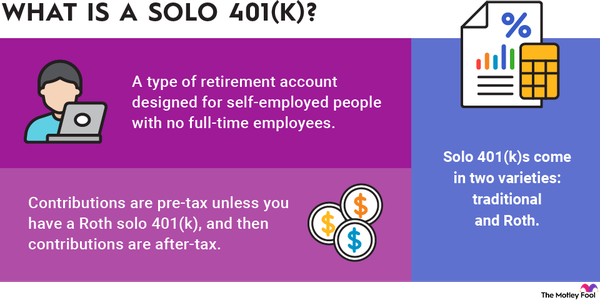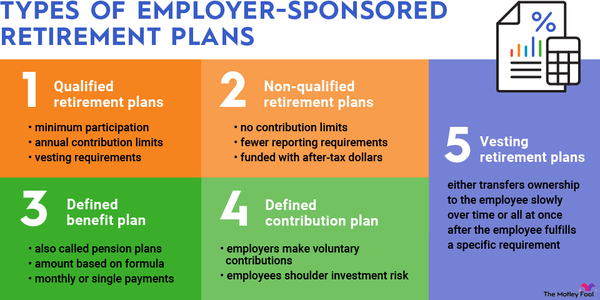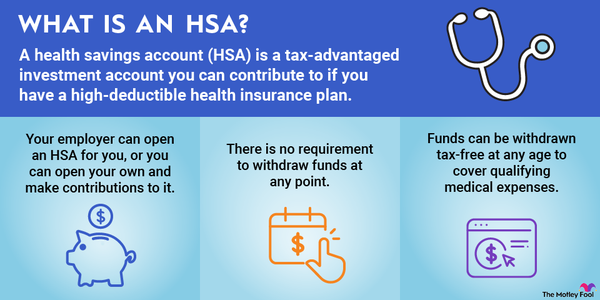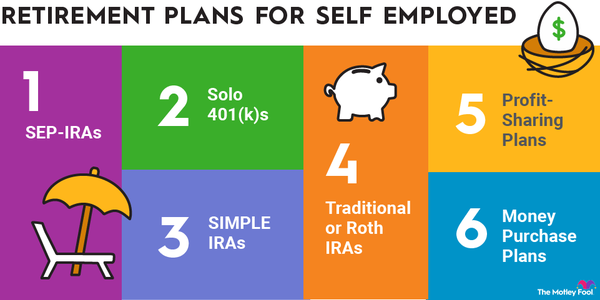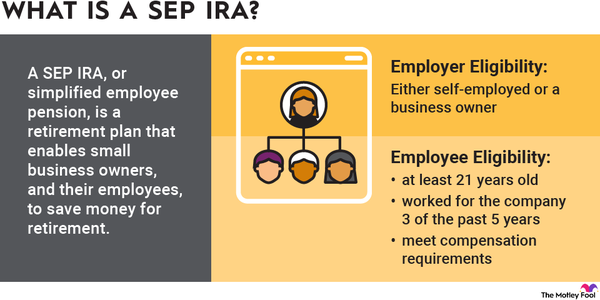There are several types of retirement savings accounts you can contribute to outside of a workplace retirement plan. A nondeductible IRA is one of them, along with a traditional IRA and a Roth IRA. All these different individual retirement accounts have some things in common:
- They all allow your money to grow tax-free, so you owe no capital gains taxes or taxes on dividends as long as your money remains invested within your account.
- You’re penalized if you make withdrawals before 59 1/2 under most circumstances. You’ll owe a 10% penalty on the taxable portion of the distribution.
- You can contribute to them only up to annual limits and can contribute only with earned income such as salaries, wages, or income from self-employment.
However, there are several important differences between a nondeductible IRA and a traditional or Roth IRA -- including who can contribute, as well as the benefits associated with investing in each.

What is a Nondeductible IRA?
A nondeductible IRA is a retirement savings account to which you contribute after-tax dollars but that allows you to grow your money for retirement without paying taxes until gains are withdrawn.
The major difference between a nondeductible IRA and a traditional or Roth IRA is that you can contribute to a nondeductible IRA no matter how much you earn. Roth and traditional IRAs, on the other hand, are subject to strict income limits. Once your income hits a certain level, eligibility to contribute begins to phase out and then disappears altogether. This doesn’t happen with a nondeductible IRA.
While a nondeductible IRA isn’t as restrictive in terms of eligibility, it also doesn’t provide the same tax benefits a traditional or Roth IRA offers. Still, you may wish to contribute to one to enable your money to grow without owing capital gains taxes or to take advantage of the opportunity to convert your invested funds to a Roth IRA.
What You Should Know About Nondeductible IRAs
Contribution limits
Nondeductible IRAs are subject to the same annual contribution limit as other IRAs. However, your contributions to a nondeductible IRA are made with after-tax dollars, while your contributions to a traditional IRA or 401(k) can be deducted in the year they’re made.
Withdrawing contributions
You can withdraw money contributed to a nondeductible IRA in retirement without paying taxes on it, though. Otherwise you’d be taxed twice on those contributions. However, to let the IRS know that you’ve contributed with after-tax dollars, you must report your nondeductible IRA contributions each year using IRS Form 8606. This form is essential to ensure you aren’t taxed on the contributed money a second time when it’s withdrawn in retirement.
Withdrawing gains
Withdrawals on investment gains will be taxed at your ordinary income tax rate. Nondeductible IRAs do not provide the tax-free withdrawals on earnings that a Roth IRA or Roth 401(k) does.
Generally you should use a nondeductible IRA only if you don’t qualify for other retirement accounts, because it does not provide the same tax advantages as other accounts.
To determine if you are limited to a nondeductible IRA, start by calculating your modified adjusted gross income (MAGI).
To determine your MAGI:
- Calculate your adjusted gross income (including wages, business income, investment income, and most other income sources).
- Subtract above-the-line tax deductions (such as the deductible portion of self-employment tax, contributions to IRAs and health savings accounts, and deductible student loan interest).
- Add back in deductions to tax-exempt accounts and tax-exempt interest income.
Then check our guides to traditional IRAs and Roth IRAs to find out the income limits for the current year. If either you or your spouse is eligible for a workplace retirement plan and your MAGI is too high, you won’t be eligible to make deductible contributions to a traditional IRA. And regardless of participation in a workplace plan, income above a certain threshold makes you ineligible to contribute to a Roth IRA at all.
Converting a Nondeductible IRA to a Roth IRA
One of the best reasons to contribute to a nondeductible IRA is to take advantage of the opportunity to make backdoor contributions to a Roth IRA.
Remember, you cannot put money into a Roth IRA if your income is too high, yet Roth IRAs are a valuable retirement savings tool because they enable you to grow your invested funds tax-free and make tax-free withdrawals on earnings as a retiree, provided you follow certain rules.
Nondeductible IRA contributions provide a way around the Roth IRA income limits. You can contribute to a nondeductible IRA, then do a Roth IRA conversion to put money into the tax-advantaged account.
A Roth conversion is a simple process if you’ve made only nondeductible contributions to your IRA. Since you’re converting only after-tax dollars, you will not owe any taxes on the conversion. However, if you have traditional IRA assets as well, part of the converted funds must be included in your taxable income.
Should You Contribute to a Nondeductible IRA?
If you aren’t eligible to contribute to tax-advantaged retirement accounts because of your (or your spouse’s) income, contributing to a nondeductible IRA provides a convenient way to save and grow your money tax-free until your earnings are withdrawn in retirement.
If you wish to contribute to a Roth IRA and your income is too high for you to do so, using a nondeductible IRA can also make it possible to benefit from the favorable tax rules associated with a Roth.
Just be aware that nondeductible IRAs don’t offer the tax benefits other types of accounts do. And make sure you file your IRS forms annually to declare your nondeductible contributions and avoid being taxed double when you withdraw funds in retirement.












